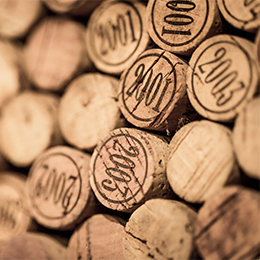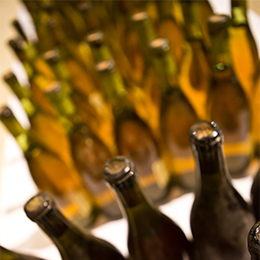The vintage refers to the year in which the wine was created. Grapes used to make a vintage wine can only come from one single year. No blending is allowed. Bourgogne wines traditionally always bear the vintage on their label, meaning that in Bourgogne, wines from different years are almost never blended.
Because the weather in Bourgogne varies greatly, the quality of the grapes and therefore of the wines can be very different from one year to the next. Thus, one finds dry and lively white Bourgogne wines one year, and rounder, more expressive ones the following. Similarly, red wines can be more or less tannic, they can have a lighter or darker color, and be more or less fruity, depending on the year.
And because the style of the wines can change, different vintages have different ageing potential.
It should be noted that, traditionally, sparkling Crémant de Bourgogne wines are blends of different cuvées or different vintages. Vintage Crémant de Bourgogne wines are only produced in exceptional years.

One often talks about good years, great years, and even exceptional years. Sometimes, we even speak about the year of the century. But is the vintage, or the year a wine was created, really as important as we are led to believe?
Each vintage has its own unique characteristics. And each of these characteristics contributes to the extraordinary palette of expressions of the Bourgogne terroir, translated through the wine.
Here are some legendary vintages
